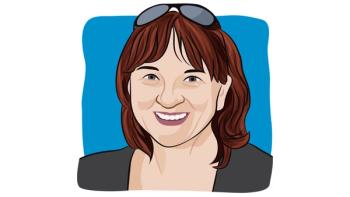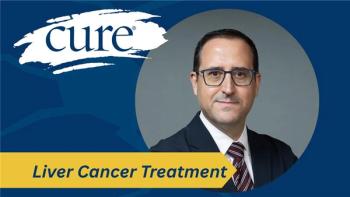
Thoughts on Breast Cancer Awareness Month: the Disease Is No ‘Stroll Through the Park’
Truly raising awareness for breast cancer — or any other disease — can’t be done with walks and colorful ribbons, but through seeing the people who are affected by the illness.
Another breast cancer awareness month? I’m sure many of the readers and bloggers here on CURE® have some strong opinions on that. I know my BRCA2 previvor daughter and I do.
OK, great. People know October is Breast Cancer Awareness Month. I hope. It’s also Liver Cancer Awareness Month. This follows September, which was Childhood Cancer, Leukemia and Lymphoma, Ovarian Cancer, Prostate Cancer, Thyroid Cancer and Uterine Cancer Awareness Month. And so on throughout the calendar year.
Cancer awareness? In my late wife’s case somebody didn’t get the memo. How my wife ended up with and dying of a very
My wife did all the “right” things. She exercised regularly, ate right, limited alcohol, got yearly physicals and mammograms, but she got triple-negative breast cancer caused by a BRCA2 mutation.
Relatives were aware of the mutation and family cancer history for years before my wife’s cancer diagnosis but didn’t share it. My wife’s doctors were aware that her mother died of cancer. And aware that her father died of metastatic melanoma and aware of my wife’s basal cell skin cancer history. Doctors were also aware she had very dense breast tissue.
So, what went wrong? I’m at a loss to explain it. But obviously, “awareness” didn’t translate into life-saving action.
The inspiration for the satirical cartoon below came while I was sitting with my wife at the cancer center waiting to talk to her oncologist about the sudden onset of severe neuropathy in my wife’s right leg.
I had recently seen a promo clip for an upcoming breast cancer awareness walk.
“A nice stroll around a park on a beautiful Arizona autumn day raises cancer awareness? #@$% that!” I thought on that October day in 2018. “Can’t get much more aware of cancer than what is happening in this building!”
Being an artist, I felt I needed to visually express my thoughts. But at the time, I had no desire to do anything with the idea because of what my wife’s brain MRI revealed that day.
I know I’m “preaching to the choir” here but having cancer or watching someone you dearly love die of it is not a once-a-year stroll through a park. It’s an everyday heartbreaking struggle for so many people.
If people outside the cancer community sincerely want to be aware and committed to preventing and curing cancer, they must be willing to honestly look beyond the hype and colorful ribbons and into the frightening dark corners of what cancer truly is.
They need to visit a cancer clinic or hospital oncology cancer ward. To see someone having chemotherapy infused. To talk to a cancer caregiver who has been up all-night caring for a loved one going through whole-brain radiation. To look in the eyes and hold the hand of a parent of a child dying of neuroblastoma.
For more news on cancer updates, research and education, don’t forget to





